Energy Portfolio
Energy Portfolio
I have two reasons for featuring this installation. It is an excellent representation of my ability to design and problem-solve as I was involved in every step of the process. Also, it is a quirky piece that amused me the entire time I was designing the functionality.
The purpose of this exhibit was to be an interactive graph showing the balance of energy sources and the projected distribution in the future. Visitors put their hands over the blower to redirect air to a vertical tube. The ball in the tube rises to a set height, representing a bar graph of information.
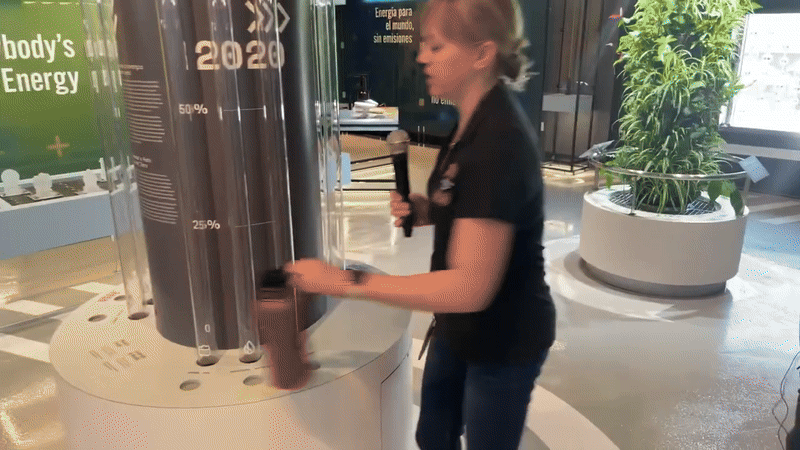
The cabinet was modeled in Fusion 360 using a flatpack furniture style design. This was done so the cabinet could be milled from plywood sheets and easily assembled like a 3D laser-cut puzzle. This was mainly to lean on my digital skills to compensate for my lack of woodworking ability.
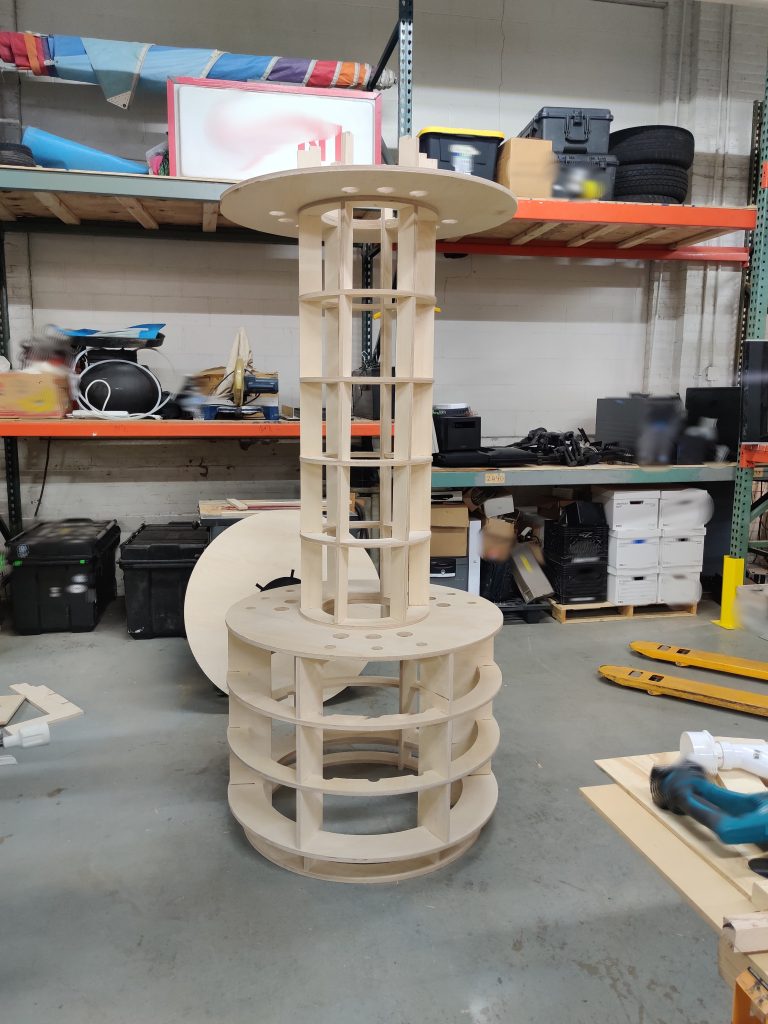
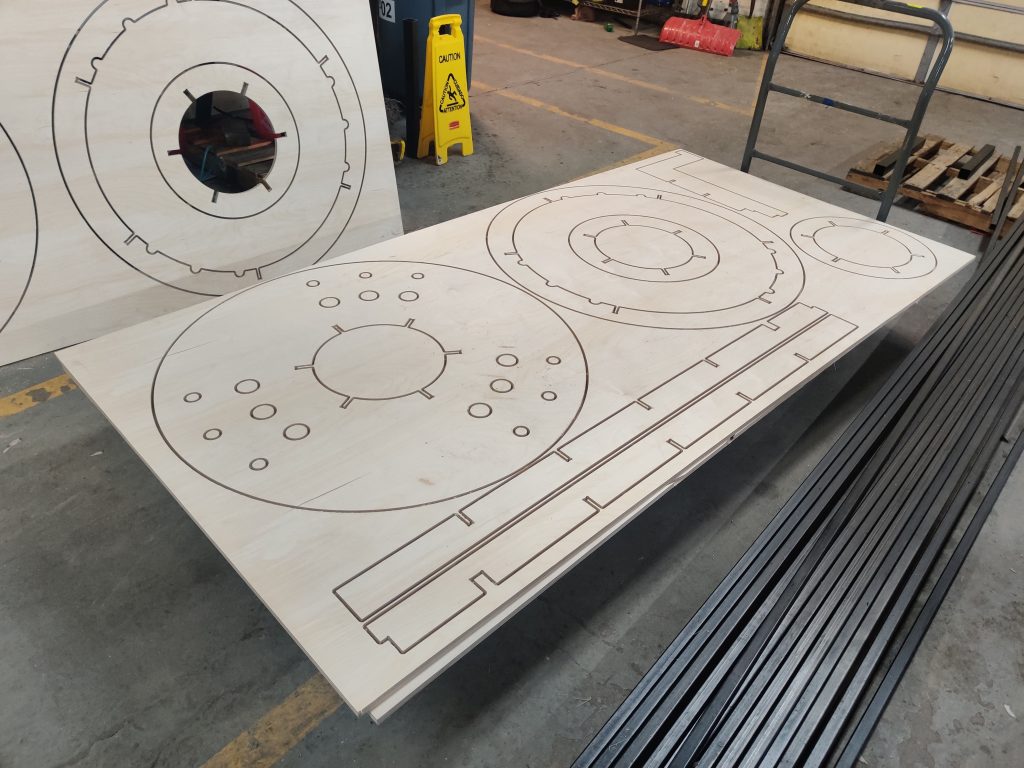
After that a layer of flexible birch was added to form the curves that the printed laminate would adhere to. I had never directly worked with laminate before this project and had to develop the skill as we went.
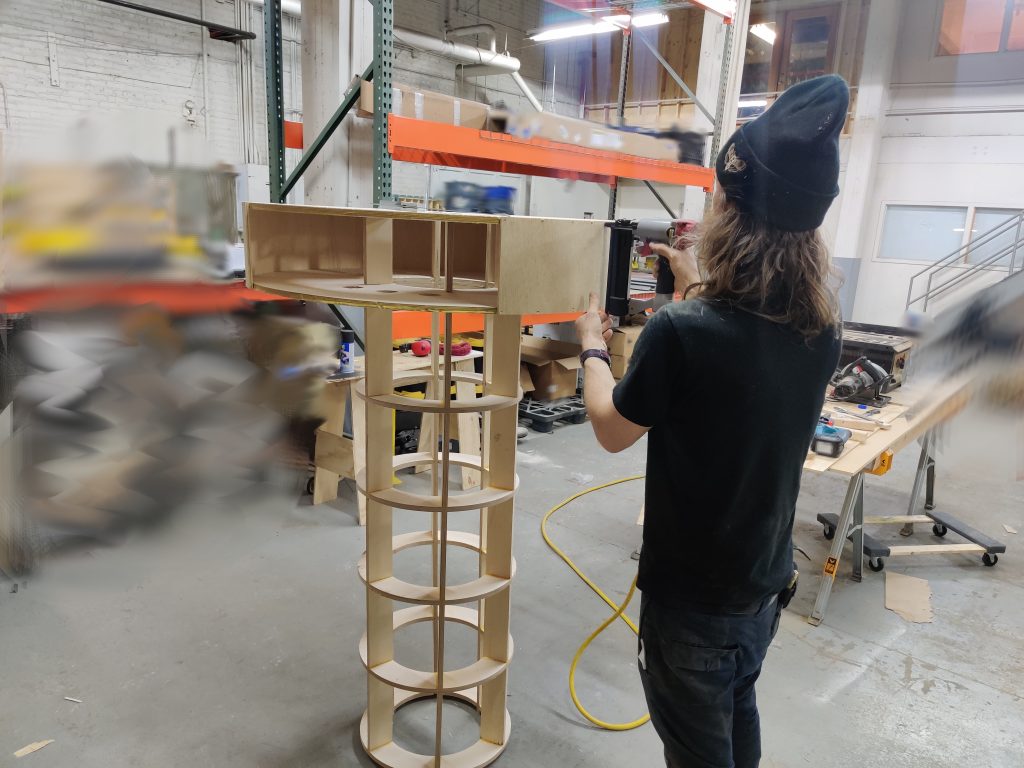
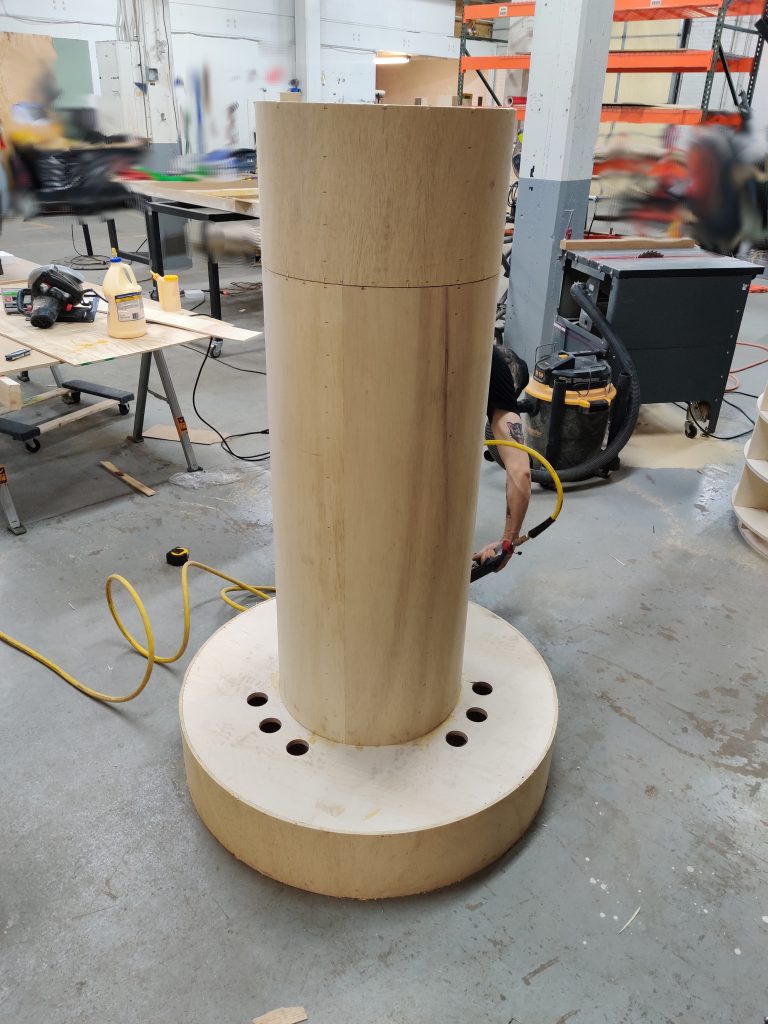
I had worked on a few projects in the past involving blower motors and was keenly aware of how loud they could be. I wanted to make it so this exhibit would not be disruptively loud while still moving a responsive amount of air. The blowers also needed to be reliable and easy to replace if they failed. Because of my past experiences with them in a range of server environments, I settled on using PWM-controlled Dell server fans.

These fans met all of the requirements—compact, easy to work with, and reliable. There is a custom PCB with an ESP32 microcontroller. This PCB handles capacitive sensing to turn on the fan banks when a hand approaches, as well as PWM control of the fan speed. To integrate the fans, I designed a custom circuit board adapter that converted a standard PWM header to the Molex MicroClasp 51353 series connector used by the Dell server fans.
Board pictures are missing…
The tubes within the base were designed with a clean-out trap in line with the grated air hole to prevent debris from entering the fan blades. The balls in the graph are basically the same as ping-pong balls and are very light. I needed the air from the fan to naturally want to move toward the hand hole so the balls would not accidentally float without someone blocking the flow. After testing a few ideas, this shape gave the best result.
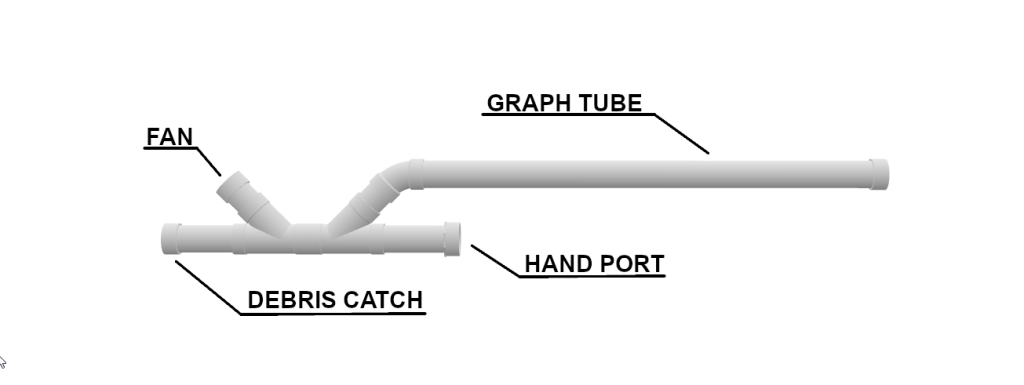
I really enjoyed this project because it was a creative way to get people of all ages to pay attention to what would otherwise be static information. People really loved interacting with the exhibit, and because of that, people who wouldn’t normally be interested stopped to read the presented statistics. It was a complete success of its intended purpose in a satisfying way.